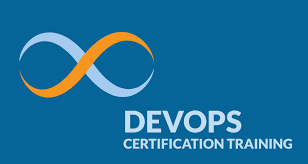
DevOps Online Training
It is a great time to learn DevOps courses and begin a career in the IT field.
LEO SOFT IT DevOps training program will provide you with in-depth knowledge of various DevOps tools, including Git, Jenkins, Docker, Ansible, Terraform, Kubernetes, Prometheus, and Grafana. This DevOps certification course is entirely hands-on and designed in a way to help you become a certified practitioner through best practices in Continuous Development, Configuration
Course: DevOps Training
Module 1 – DevOps Introduction
Objectives – At the end of this Module, you should be able to:
- What is DevOps
- What is SDLC
- Why DevOps
- DevOps principles
- Waterfall vs Agile vs DevOps
- DevOps tools
Module 2 - Cloud Computing Concepts
Objectives – At the end of this Module, you should be able to:
- Cloud History
- Cloud Computing Concepts
- Cloud Deployment Models
- Cloud Delivery Models
- Cloud Computing Benefits
Module 3 – AWS/ Azure Overview
Objectives – At the end of this Module, you should be able to:
- AWS/Azure History
- Brief Overview of AWS/Azure
- AWS /Azure as a Market Leader
- AWS /Azure Globally Distributed Infrastructure
- Discuss AWS/ Azure Products and Services
Module 4 - Virtualization
Objectives – At the end of this Module, you should be able to:
- What is Virtualization?
- History of Virtualization
- What is Hypervisor?
- Types of Server Virtualization
- Benefits of Virtualization
- Important Virtualization products
Module 5 - VAGRANT
Objectives – At the end of this Module, you should be able to:
- Introduction
1. Why and what is Vagrant
2. Uses of Vagrant in an environment
3. Alternatives of Vagrant
4. Vagrant versions
- Installation and Configuration
1. Installing Virtual box
2. How to install Vagrant on Windows
3. Configuring Vagrant
- Provisioning with Vagrant
1. Creating first VM with Vagrant
2. Operations on the VM
3. Connecting to the VM
4. Add required Images to Vagrant
5. Using Vagrant.
Module 6 - GIT: Version Control System
Objectives – At the end of this Module, you should be able to:
- Introduction
1. Version control systems
2. Local, Centralized and distributed
- Installing Git
1. Installing on Linux
2. Installing on Windows
3. Initial setup
- Git Essentials
1. Creating repository
2. Cloning, check-in and committing
3. Fetch pull and remote
4. Branching
Module 7 - Configuration Management: Chef
Objectives – At the end of this Module, you should be able to:
- Overview of Chef
1. Common Chef Terminology (Server, Workstation, Client, Repository etc.)
2. Servers and Nodes
3. Chef Configuration Concepts
- Workstation Setup
1. How to configure knife
2. Execute some commands to test the connection between knife and workstation
- Organization Setup
1. Create Organization
2. Add yourself and node to the organization
- Test Node Setup
1. Create a server and add to organization
2. Check node details using knife
- Node Objects and Search
1. How to Add Run list to Node
2. Check node Details
- Environments
1. How to create Environments
2. Add servers to environments
- Roles
1. Create roles
2. Add Roles to organization
Module 8 - Configuration Management : Puppet
Objectives – At the end of this Module, you should be able to:
- What is Puppet?
1. How puppet works
2. Puppet Architecture
3. Master and Agents
4. Configuration Language
5. Resource Abstraction Layer
6. Transactional Layer
- Installation and Configuration
1. Installing Puppet
2. Configuring Puppet Master and Agent
3. Connecting Agents
- Puppet Master
1. Puppet configuration tree
2. Puppet configuration files
- Puppet Language Basics
1. The declarative language
2. Resources
3. Resource Collectors
4. Virtual Resources
5. Exported Resources
6. Manifests
7. Relationships and Ordering
8. Modules and Classes
9. Class Parameters
10. Defined Types
- Puppet Language Advanced
&
Enroll For Course Now